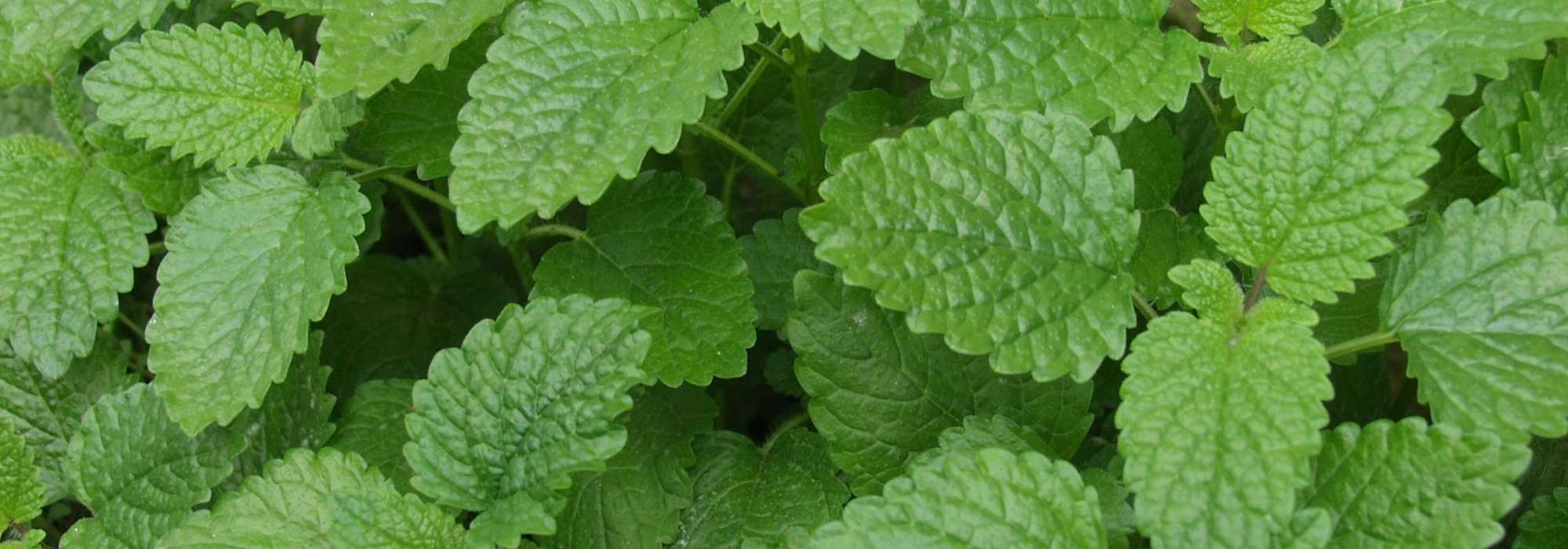
Lemon balm: sowing, planting, growing
Summary
Lemon balm in a nutshell
- Melissa officinalis (lemon balm) is a perennial aromatic plant whose leaves release a delightful lemon scent when crushed
- It has medicinal benefits and properties recognised since Antiquity for relieving stress and high blood pressure
- Its lemon scent keeps mosquitoes away!
- Easy to grow and hardy, it spreads and self-seeds freely in all soils
- Ideal for sowing or planting to flavour salads, vegetable patch or borders!
A word from our expert
Melissa officinalis, also called lemon balm in reference to the lemon scent of its leaves when crushed between fingers, is a perennial plant known since Antiquity for its medicinal properties: in capsules or as an infusion, lemon balm helps combat stress, colic, herpes, hypertension and even hypothyroidism. Carmelites who grew it in their monastery gardens drew from its leaves their famous “Melissa Water”, an elixir widely taken at court of Louis XIV to relieve migraines.
Nowadays, lemon balm delights gardeners! With its very aromatic, edible downy foliage and its small white or pink, very melliferous flowers, it brings touch of simplicity and light to natural, wild gardens, or romantic settings as well as in vegetable patch.
It is a mosquito-repellent plant: its citronella scent also repels these unwelcome insects in summer.
Easy to grow, use lemon balm for its ornamental and aromatic qualities in borders or for its culinary properties in vegetable patch: its fresh leaves finely chopped in salads, in herbal teas or infusions will release their lemon flavour.
What are benefits of lemon balm? When and how to harvest lemon balm? Discover our lemon balm plants easy to sow or to plant, as well as secrets of their cultivation!
Description and botany
Botanical data sheet
- Latin name Melissa officinalis
- Family Lamiaceae
- Common names Lemon balm, balm
- Flowering June to September
- Height 0.30 to 1 m
- Sun exposure Sun, partial shade
- Soil type all, well-drained
- Hardiness -15°C
Also called lemon balm, simply balm, “lemon herb” in reference to the lemon scent of its leaves or even “bee balm”, lemon balm is an aromatic herbaceous perennial belonging to the family Lamiaceae, like mint, thyme and lavender. It should not be confused with lemon verbena (Lippia citriodora), nor with true citronella (Cymbopogon citratus), a grass whose aromatic, lemon-scented stems and leaves are widely used in Asian cuisine.
Native to Asia and the Mediterranean basin, it has naturalised widely across France and in Corsica, where it grows wild along hedgerows, in woods, or on the banks of paths and ditches, preferably in moist, shaded places. The species Melissa officinalis, widespread throughout France, has given rise to several cultivars, some of them variegated, such as ‘Aurea’ or “variegated lemon balm” with green-and-gold foliage, ‘All Gold’ or “golden balm”, and ‘Citro Quick’ with a very lemony scent.
The plant spreads by long rootstocks that anchor quickly in the soil. It forms a compact, upright, bushy habit, highly branched in the upper parts, reaching 30 to 80 cm in height in every direction. Lemon balm naturally tends to spread; it is an invasive plant, capable of reseeding wherever it pleases!
On quadrangular, pubescent stems unfold attractive simple leaves, opposite, ovate and sometimes cordate, petiolate. Slightly villous, rough to the touch, broadly dentate, they have a characteristic puckered appearance with prominent veins and measure 5 to 8 cm long. Leaves at the base of the clump and on secondary shoots are smaller.
These are bright green to mint green and turn golden on variegated forms (‘Aurea’).
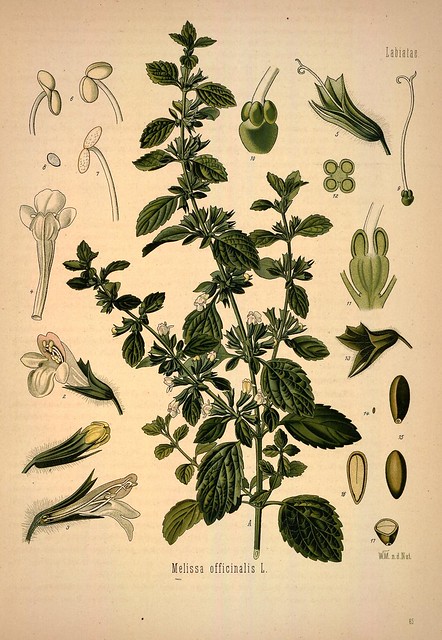
Melissa officinalis – botanical illustration
Whole plant aromatic.
This foliage is deciduous to semi-evergreen depending on climate and resembles that of mint and nettle. Highly aromatic, lemon balm leaves release, when crushed between the fingers, a scent of mint, lime and citronella, ideal for keeping mosquitoes away in summer! Leaves are edible and add a unique citrus note to summer dishes and salads.
On this slightly pubescent foliage, small inflorescences appear. From June to September, small white or pink flowers, grouped in threes or sixes in small clusters, open in the axils of the leaves along the stem.
Initially tubular, they open into a bilabiate corolla 2 to 4 cm long divided into 5 notched petals set in a dentate, hairy calyx. Upper lip is erect and delicately cut, lower lip divided into three unequal lobes. Each flower houses a cluster of four curved stamens.
This delicate flowering is particularly nectariferous and melliferous; lemon balm flowers are much visited by foraging insects, which earned the plant its name (“melissa” in ancient Greek meaning “bee leaf”).
Flowers develop into small fruits, achene-like fruits 1.5 to 2 mm wide containing numerous smooth black seeds, self-seeding profusely in gardens.
Very hardy to -15/-20°C, lemon balm establishes itself everywhere in France. Although this plant of cool woodland will tolerate ordinary soil, it prefers fertile, cool, clayey and deep but well-drained ground. It grows in non-scorching sun or in partial shade.
It can be used anywhere; as a groundcover at the edge of a border or path, in a herb garden as well as in the vegetable plot where its nectar-rich flowers will irresistibly attract pollinating insects.
The Melissa officinalis has culinary qualities and therapeutic virtues recognised since Antiquity: its fresh leaves are rich in essential oil. They flavour salads and all sorts of sweet and savoury preparations. They are also used as an infusion. Lemon balm is reputed for its sedative effects and its antispasmodic properties, useful for soothing digestive troubles, nervousness and agitation.
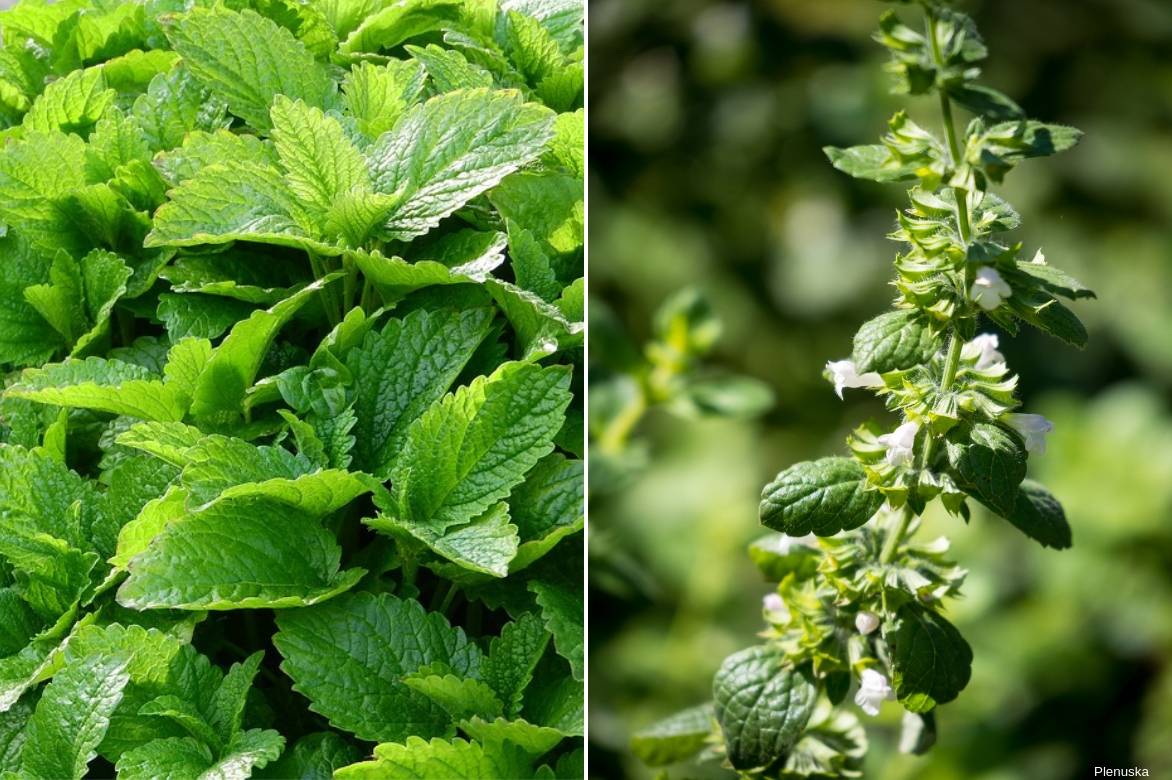
Melissa officinalis : lemon-scented foliage and very nectariferous and melliferous flowering
In the Middle Ages, its delightful lemon taste inspired the Carmelite friars in Paris to make “Eau de Mélisse des Carmes”, an elixir with a secret recipe, much appreciated for soothing migraines and indigestion. Lemon balm is also used in the making of Bénédictine and Chartreuse, two liqueurs born at the end of the Middle Ages and during the Renaissance.
You may also read
10 effective mosquito-repellent plantsMain species and varieties
Lemon balm (Melissa officinalis) offers some interesting cultivars for their intensely lemony scent or their foliage sumptuously variegated with gold.
Our favourites
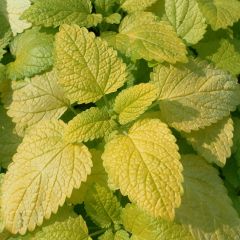
Melissa officinalis Aurea
- Flowering time february
- Height at maturity 80 cm
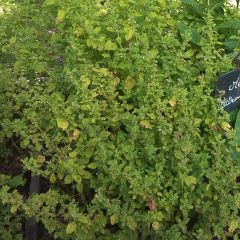
Melissa officinalis
- Height at maturity 80 cm
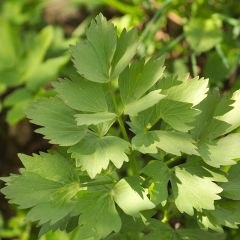
Citro Quick Lemon Balm
- Flowering time august, september
- Height at maturity 60 cm
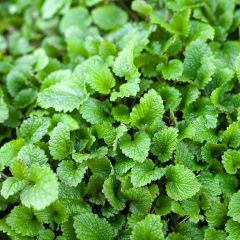
Oragnic Melissa officinalis
- Flowering time august, september
- Height at maturity 80 cm
Discover other Lemon balm
View All →Available in 1 sizes
Available in 1 sizes
Available in 1 sizes
Available in 1 sizes
Available in 1 sizes
Available in 1 sizes
Available in 1 sizes
Available in 1 sizes
Available in 1 sizes
Available in 1 sizes
Planting
Where to plant Melissa officinalis?
Easy to grow, Melissa grows in all our regions, resistant without problem to cold down to -15°C to -20°C.
This perennial of light woodlands needs good sunlight. It likes non-scorching sun and shaded situations; variegated melissas, more delicate, can suffer from sun and will prefer light shade in southern France.
Undemanding, Melissa adapts to any soil, even poor or stony, although it prefers fresh, humus-bearing, light, clayey, well-drained soil, in which it will self-seed easily. Good humus-bearing soil that stays cool will make it happy: it only fears soils that are too dry or too waterlogged.
Give it a spot where it can freely develop its suckering tufts, because it tends to encroach on neighbours… Read our article on this subject Stop melissa invasion! : our solutions.
With its bushy habit, Melissa is ideal for natural or wild gardens. It adds depth and lightness to border beds, thrives under trees at woodland edge or along a path. It is also useful for covering base of a hedge.
In small spaces or on a balcony, it is also very suitable for container growing. Plant it near windows as its lemony scent will deter mosquitoes. It naturally finds its place in organic vegetable garden or in aromatic herb garden, in herb patch where its scent attracts bees and butterflies while repelling flies and aphids!
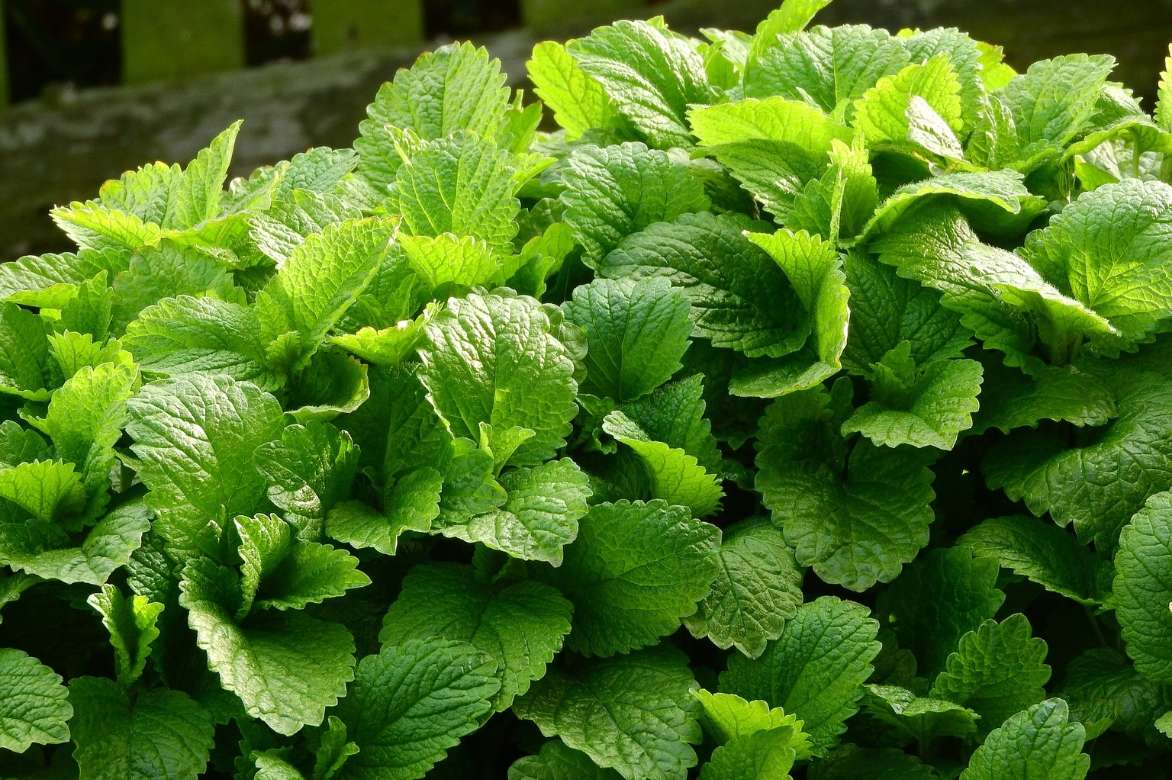
When to plant Melissa or lemon balm?
Our Melissas in bucket are planted in spring from February to April or in autumn from September to November, outside periods of frost and extreme heat.
How to plant Melissa officinalis?
1) In ground
For group planting: plant our Melissas in bucket by 5 young plants per m2 spacing them 0.40 to 0.60 cm in all directions.
- Loosen soil well,
- Dig hole 2 to 3 times bucket volume,
- Spread gravel at bottom of planting hole,
- Place rootball,
- Refill and add a handful of compost to garden soil,
- Water copiously,
- Mulch
And follow our advice to plant a perennial well!
2) In pot or window box
Melissa is an invasive plant, capable of prolific self-seeding: planting in a pot limits spread. It will be as happy in front of a sunny window as on a balcony in a pocket vegetable garden!
To plant in a pot or window box:
- Start by spreading a layer of grit or clay balls at bottom of a pierced container to ensure drainage,
- Plant Melissa in a mix of garden soil and potting compost,
- Water regularly for two months after planting
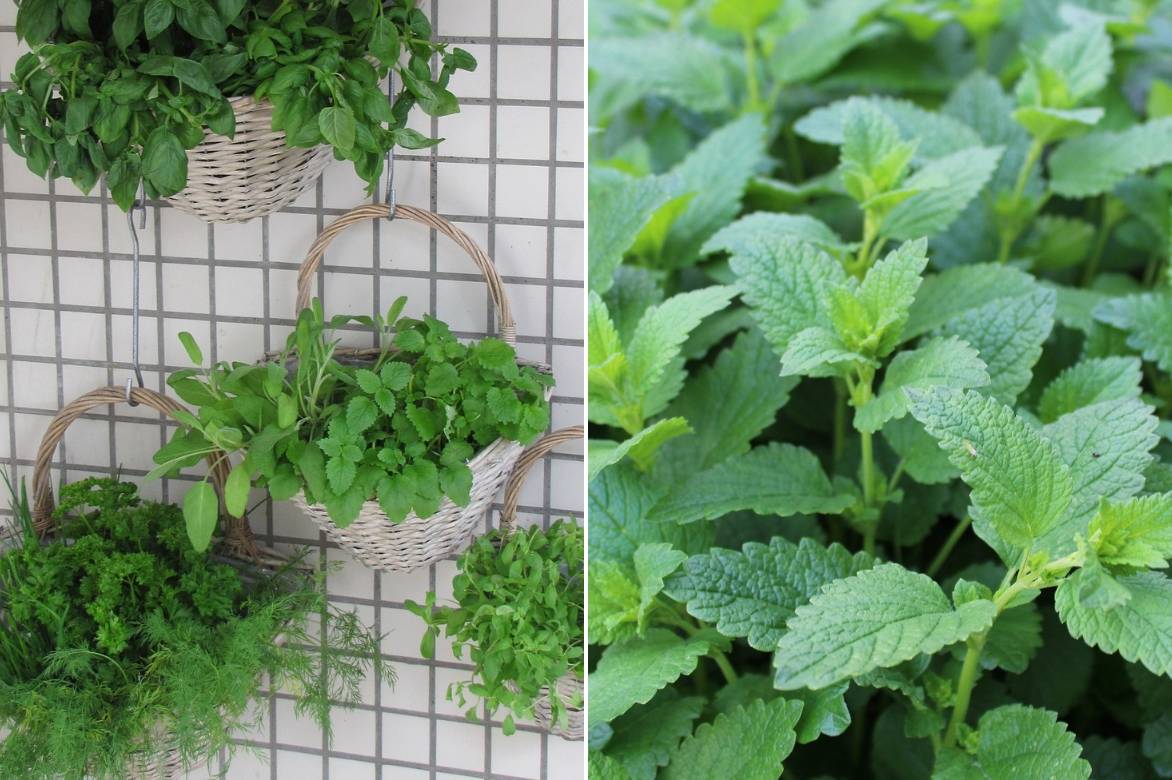
Melissa in a basket alongside other aromatic herbs (sage, parsley, basil…)
You may also read
Tisane and infusion: which plants to grow in the garden ?When and how to sow lemon balm?
Sowing under cover
Sowing of lemon balm seeds takes place in spring, from March to May in seed trays or in individual buckets
- Place seeds in free-draining mix of potting compost, garden soil and sand
- Cover seeds lightly with potting compost
- Water regularly with fine spray until emergence
- Thin sowing, keeping one young plant every 5 cm
- Transplant young plants in autumn, when well established, into open ground about 40 cm apart or into larger pots
In open ground
- Sow directly lemon balm seeds after last frosts, usually in May into soil enriched with compost
- Cover with thin layer of potting compost
- Firm down
- Water with watering can fitted with fine rose and keep soil moist until emergence
- Thin out to 50 cm spacing
- Remember to water regularly to aid establishment
→ Also discover how to grow lemon balm in a pot in our advice sheet.
→ Master sowing of culinary seeds with our video tips!
Care, pruning and harvest of lemon balm
Hardy and robust, lemon balm requires hardly any care once well established.
Lemon balm likes soils that stay cool: give regular watering during prolonged dry spells.
Mulch in spring with compost to keep sufficient coolness at the base and with straw in autumn to protect the stump from very severe frosts.
In March, cut back old foliage and remove all dead stems to encourage growth of new leaves.
Lemon balm self-seeds easily from its small seeds: spot spontaneous sowings, pull up small basal leaf rosettes in spring to prevent it becoming too invasive. With pruning shear, cut the clump back to ground level after flowering in July to avoid these unwanted sowings and revitalise the clump. This drastic cut will allow plant to regrow lush and green.
Divide lemon balm clumps every 4 to 5 years to keep them vigorous.
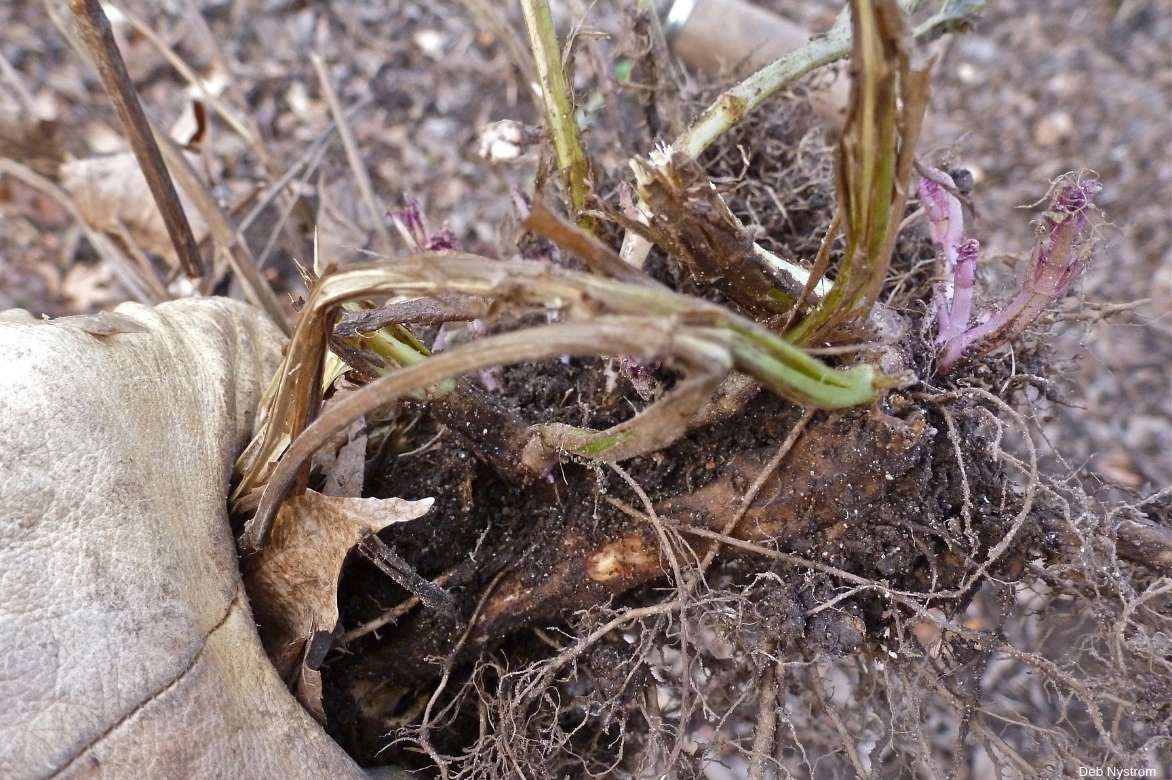
Lemon balm stump, to divide every 4-5 years
Take the opportunity to keep the cut stems: select the best leaves, fresh and finely cut, they will flavour raw vegetables and salads; dried, they make delicious herbal teas. Use the stems to scent wardrobes! Lemon balm harvest is done as needed, from May to September. Lemon balm leaves freeze well and tolerate very well upside-down drying in a ventilated room. Learn more with our advice sheet How to dry lemon balm leaves?
This is a hardy plant that knows neither diseases nor parasitic pests. However, young fresh leaves are regularly endangered by slugs and snails at the start of growth. Protect them from their appetite by discovering our 7 ways to fight slugs effectively and naturally.
Propagation
Lemon balm spreads spontaneously. It is very easy to propagate from its seeds harvested in autumn in the garden (find our tips to sow lemon balm seeds in section “How to sow lemon balm”). Division of clumps in spring or autumn is also easy and helps preserve your plants.
By dividing clumps
To divide a clump of lemon balm:
- Start by lifting the clump with a digging fork,
- Using a spade, cut sections of rootstock with three or four buds,
- Replant immediately into the garden in well-worked soil.
Companion planting lemon balm in the garden
With its simple bushy habit,lemon balm finds its place in all natural and wild gardens, in the meadow beds of a cottage garden and in a white garden.
Indispensable in an herb garden for its lemon scent, and in a vegetable plot where it pairs with other aromatic perennials such as Monardas with bergamot scent, mints, nepetas, common sage, agastaches.
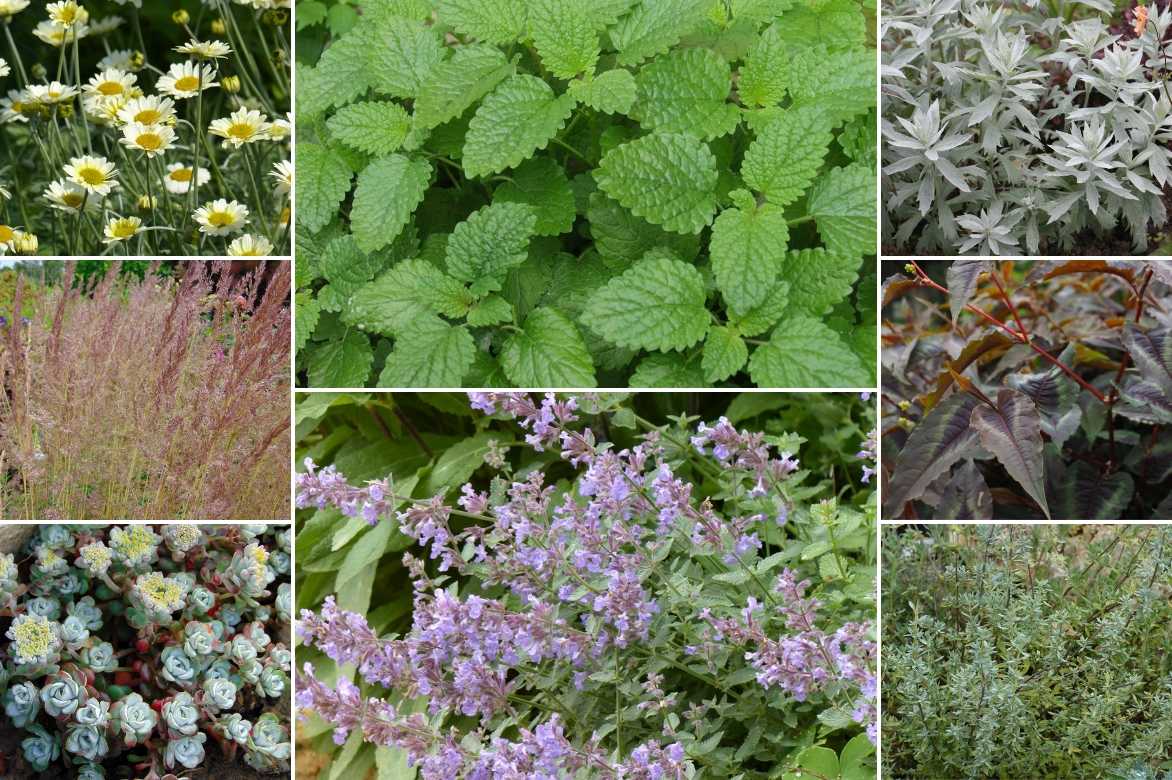
An idea for a planting combination: Anthemis tinctoria ‘Sauce Hollandaise’, Calamagrostis acutiflora ‘Avalanche’, Melissa officinalis, Nepeta faassenii, Persicaria microcephala ‘Red Dragon’, Sedum ‘Cape Blanco’ and Thymus vulgaris as an edging
Its pastel flowering makes it essential in summer scenes of romantic inspiration at the feet of roses, from which it will keep aphids away, together with tree mallows, hardy geraniums, Astrances, foxgloves and Hostas.
For edging, create fresh green/white combinations by pairing it with cottage perennials such as white phlox, veronicas, Verbena hastata and white achilleas. Varieties of lemon balm with gold-splashed foliage such as ‘Aurea’ will form beautiful luminous bushes in green-white-cream harmonies, surrounded by mints and sages with variegated foliage.
Useful resources
- Discover the most beautiful perennials of 2019!
- Here is a selection of 15 medicinal plants with many benefits… to grow in your garden!
- The most beautiful aromatic herb seeds are here!
- Read: 5 medicinal plants for digestive problems
- Pascale shares the recipe for lemon balm syrup in her tutorial.
- Subscribe!
- Contents
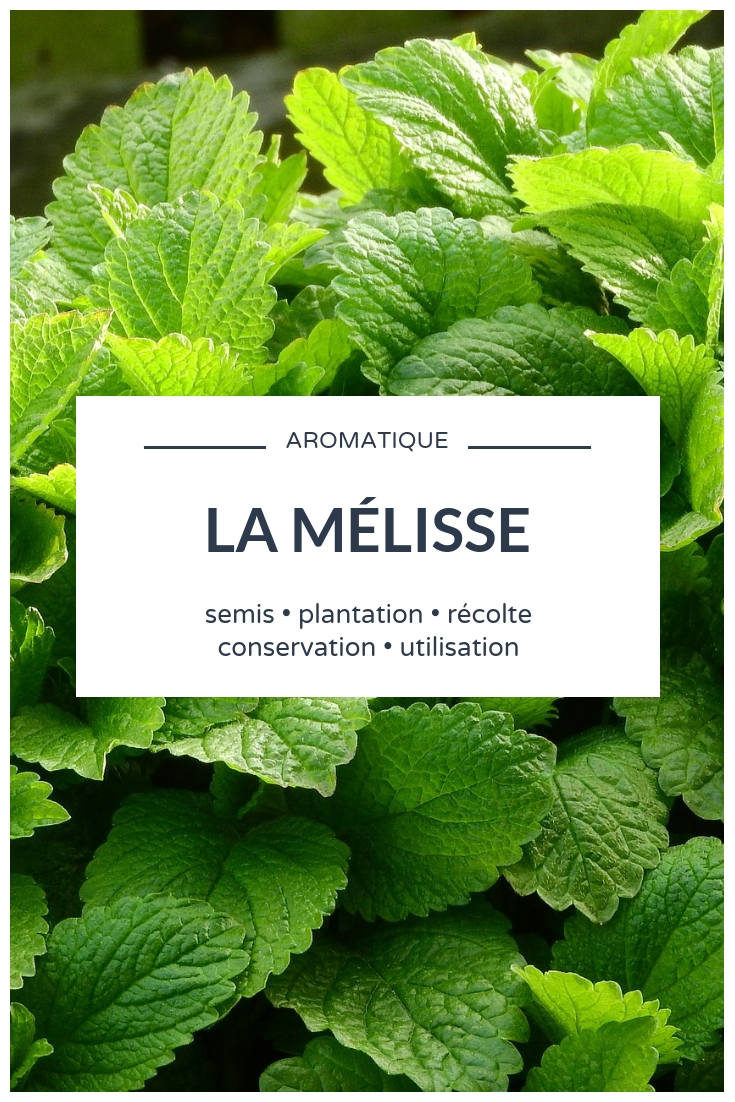
































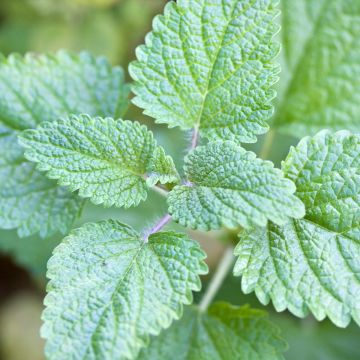

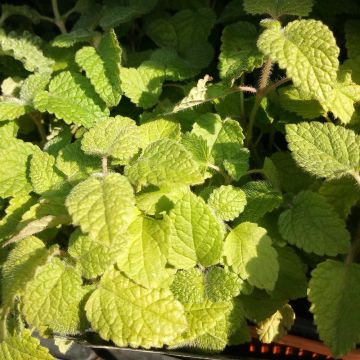

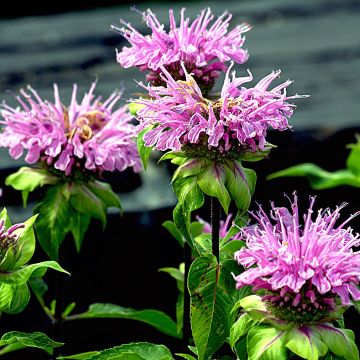
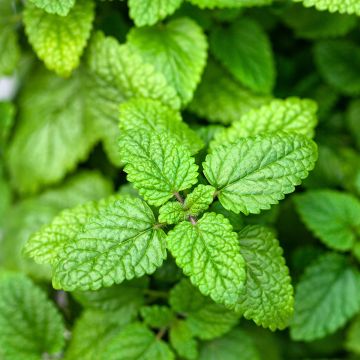

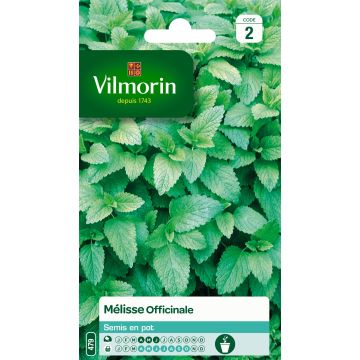

Feedbacks